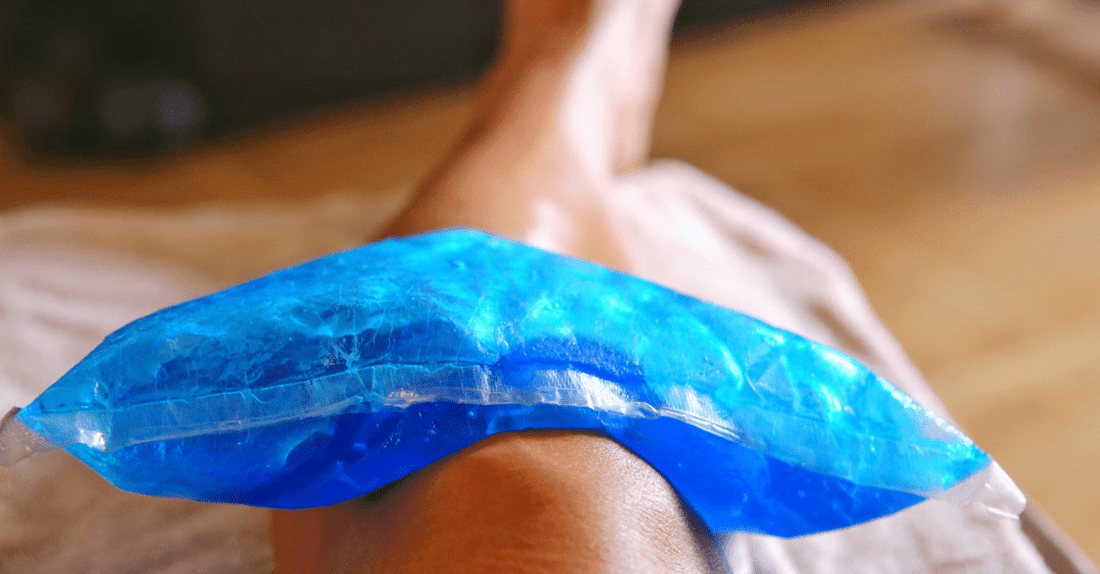Both heat and ice have long been recommended as treatments for pain and soreness and to help with injury recovery. But do they work? And is one better than the other? Read on to learn when to use heat vs. ice.
Different Methods for Different Circumstances
Although the end goal is the same—pain relief and recovery—heat and ice treatments work in opposite ways:
- Heat helps muscles to relax and boosts blood and nutrient flow. It can also increase swelling in inflamed areas.
- Cold will slow blood flow and reduce pain. It can reduce swelling in inflamed areas.
Heat can be a soothing form of pain relief, while ice—painful in itself if you’re sensitive to cold—brings pain relief by numbing an area. When pain relief is the only concern, the issue of heat vs. ice therapy can come down to personal preference for a wide range of conditions, from arthritis to back and neck pain to fibromyalgia.
What About Inflammation?
Inflammation is where recommendations get tricky. Heat is generally recommended against for inflamed areas, as heat can increase swelling, and nobody wants that. Many professionals have long recommended ice instead, since it does the opposite—it decreases swelling at an injured area.
However, this advice is now being called into question (see: when not to use ice) because swelling is one of the mechanisms by which the body heals itself. Using ice to reduce swelling could very well delay the onset of healing.
Heat or Ice for Acute Injuries
An acute injury is a sudden injury often resulting from a traumatic event. Acute injuries in the early stages of healing will often have swelling and inflammation, so that rules out heat as a treatment. You can consider icing an acute injury for pain relief, or to reduce unreasonable swelling—but keep in mind what said about inflammation and the healing process.
Arthritis & Gout
Arthritis is a chronic condition in which joints become inflamed and painful as cartilage is worn away. It can affect any joint in the body, from knees and shoulders to fingers and elbows and toes and ankles and even the spine.
For this type of inflammation, and since this is a chronic condition, we don’t have to worry about whether the heat increases swelling or the ice decreases healing. We use whichever works best to ease the pain. For osteoarthritis, this is most often moist heat, as from a soak in a warm tub or shower.
For the more intensely painful flare-up of gout, ice is more helpful for numbing the pain in the affected joints.

Headaches & Migraines
Cold therapy for headaches has been used for over 150 years with documented success. While many people recommend cold packs or masks applied to the forehead, eyes, and temples, you might have even more luck applying it to the neck to cool the blood in the carotid arteries before it travels to your brain.
Muscle Strain
If muscle strain is treated as an acute injury, avoid using heat until the swelling has gone down. But once the swelling has resolved, heat is a good way to relax the muscle and relieve any stiffness.
Tendinitis & Tendinosis
Tendinitis is an acute condition—a sudden injury—in which a tendon that connects a muscle to a bone becomes inflamed. Tendinosis, in contrast, is a chronic condition resulting from sustained overuse. The pain of these two conditions can feel similar. They are often confused with one another, so deciding whether this is an ice vs. heat injury can be tricky.
But since tendinitis is an acute injury, with associated inflammation due to the body’s natural healing process, you’ll want to avoid heat and use ice only if necessary to reduce pain or swelling.
Since tendinosis is a long-term, chronic condition, heat is probably your best bet for relieving stiffness and reducing pain.
How to Apply Heat and Ice
The general rule is to apply heat or ice for 15 to 20 minutes, then take 15 to 20 minutes off before repeating as needed.
You’ll often see recommendations to use a bag of frozen peas or corn in place of ice, but this won’t deliver nearly the level of cold you’ll get from actual frozen liquid. Instead, you can try ice cubes in a plastic baggie, or even better a frozen gel pack. If you don’t mind getting messy, you can also freeze water in a Dixie cup and hold it to the affected area as it melts.
Additionally, cold masks are available at drug stores, and for less extreme treatments you can always soak a towel in cold water.
For heat, a great overall option is simply a soak in a bath, shower, or hot tub. You can also find heat wraps and heating pads at your local drug store.
Other Pain Relief Treatments
We try to avoid pain relieving drugs until other treatments have failed. A visit to a physical therapist is a great way to learn strategies for dealing with injury, especially chronic conditions. And don’f forget to consider massage cream for muscle pain. A good massage can make you feel a lot better than either ice or heat.

